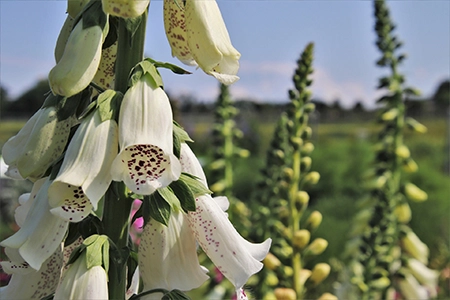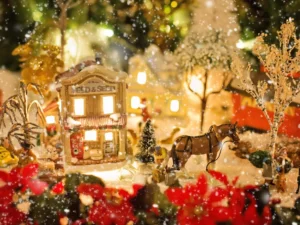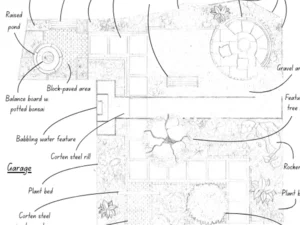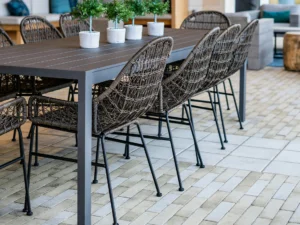Introduction
In the realm of gardening, the balance between light and shade plays a crucial role in determining the success of your plantings. Understanding the nuances of partial shade becomes key to cultivating a garden that thrives.
Join us as we delve into the shaded splendour of the plant world, discovering the best partial shade plants that can elevate your garden’s allure and resilience. Let’s explore the meaning of plants that thrive in partial shade, factors influencing light levels, and the art of proper plant placement.
Understanding Partial Shade Conditions
Plants that have adapted to thrive in partial shade exhibit a remarkable ability to make the most of varying light conditions. Unlike plants that exclusively thrive in full sun or deep shade, those in the partial shade category have evolved to capitalise on the nuanced interplay of light and shadow. In essence, they are nature’s specialists, finely attuned to the delicate balance between exposure and shelter.
Partial shade, as the name suggests, refers to conditions where these plants receive sunlight for only a portion of the day. This can manifest in different ways, from the dappled sunlight that gently sifts through the leaves of overhead trees to the filtered illumination during the morning and evening hours. In such environments, these adaptable plants have found their sweet spot, harnessing the benefits of both sunlight and shade.
The dappled sunlight created by the intricate patterns of a tree canopy, for example, provides an ever-changing tableau of light intensity. Similarly, the morning and evening rays, softer and more angled, offer a gentler form of sunlight. In these conditions, partial shade plants have evolved mechanisms to optimise photosynthesis, ensuring efficient energy absorption and utilisation without being overwhelmed by excessive sunlight.
This niche category’s ability to embrace and thrive in the dynamic dance between light and shadow is a testament to the resilience and adaptability of these botanical wonders. It showcases how, in the intricate tapestry of a garden, certain plants have found their ecological niche, gracefully navigating the nuanced conditions offered by partial shade.
Factors Influencing Light Levels
The interplay of light and shade within a garden is a complex ballet orchestrated by several factors, each contributing to the unique microclimates that exist within the outdoor space. One significant influence is the orientation of the garden, which determines how it interacts with the sun throughout the day. Gardens facing different directions experience variations in sunlight exposure, affecting the suitability of certain areas for plants.
Tall structures, such as buildings, walls, or fences, cast shadows that transform throughout the day as the sun moves across the sky. These structures create pockets of shade, influencing the availability and duration of sunlight in specific garden areas. Similarly, neighbouring trees, with their sprawling canopies, contribute to the formation of shaded zones, influencing the amount of direct sunlight that reaches the ground below.
The orientation of your home also plays a pivotal role in shaping light patterns. Gardens on the north side of a house, for instance, tend to receive less direct sunlight and may have a more prolonged duration of shade. Conversely, south-facing gardens generally receive more intense sunlight, creating areas with varying degrees of exposure.
Understanding these factors is essential for strategically placing plants that thrive in partial shade. By identifying and mapping out the changing light patterns within your garden, you can optimise planting locations, ensuring that each species receives the ideal balance of sunlight and shade for its growth and development. This thoughtful approach to garden planning enhances the overall health and vibrancy of your plantings.
Explore one of our latest blogs, which explores in-depth insights on various garden position types, helping you make informed decisions to elevate your gardening experience.
Importance of Correct Plant Placement
Strategic placement of plants in their optimal light conditions is akin to creating a bespoke environment tailored to their unique needs. This thoughtful positioning serves as a foundation for flourishing, where each plant experiences an ideal balance of sunlight, fostering not only healthy growth but also the development of vibrant blooms and lush foliage.
By placing plants in conditions that suit their preferences, gardeners unlock the full potential of each species, allowing them to showcase their unique and impressive characteristics. Whether it’s a sun-loving perennial or a shade-thriving fern, correct placement becomes the key to unlocking the full spectrum of a plant’s beauty and vitality.
Consequences of Incorrect Plant Positioning
Strategic placement of plants based on their light preferences is akin to orchestrating a symphony where each participant has a designated role, contributing to the overall harmony of your garden. It involves understanding the specific needs of each plant species and aligning them with the available sunlight conditions in different areas of your garden.
Plants have evolved to thrive in particular light environments, and providing them with their preferred conditions is like offering a bespoke setting tailored to their unique requirements. Sun-loving plants, for example, revel in bright, direct sunlight, using it as an energy source for photosynthesis and overall metabolic processes. On the other hand, shade-loving plants have adapted to lower light levels, and placing them in areas with dappled sunlight or filtered shade allows them to flourish.
The benefits of correct placement extend beyond mere survival; they manifest in the outward expressions of the plant’s vitality. Adequate sunlight fosters robust growth, contributing to sturdy stems and vibrant foliage. It stimulates the production of essential nutrients and promotes flowering, resulting in the vivid and captivating blooms characteristic of healthy, well-positioned plants.
Moreover, strategically placing plants ensures they are not competing for resources. Each species can access the necessary sunlight without overshadowing or being overshadowed by others. This thoughtful arrangement minimises stress on plants, allowing them to channel their energy into growth and development rather than struggling for light.
In essence, the strategic placement of plants creates a harmonious and visually appealing tapestry in your garden. It’s a thoughtful approach that capitalises on the inherent preferences of each species, fostering an environment where every plant can showcase its unique beauty. As a gardener, understanding and implementing this principle is a key step towards cultivating a thriving and visually captivating outdoor space.
Plants that are Dearly Effected by Poor Placement
Hydrangeas, with their enchanting and diverse blooms, are often associated with partial shade conditions. When exposed to prolonged direct sunlight, however, they may experience challenges such as scorched leaves and reduced flowering. The sun’s intensity can lead to leaf burn, causing the edges of the leaves to turn brown or crispy.
Additionally, prolonged exposure to harsh sunlight may impact the plant’s overall vigour, affecting its ability to produce the lush and abundant blooms that hydrangeas are celebrated for. Hence, placing hydrangeas in areas with dappled sunlight or filtered shade is crucial to preserving their health and ensuring a profusion of beautiful blossoms.
Hostas, renowned for their lush foliage and preference for shaded environments, can face issues when exposed to excessive sunlight. In full sun conditions, hostas may exhibit leaf burn, where the edges of the leaves become scorched and discoloured. This can result in diminished vigour and an overall reduction in the plant’s visual appeal.
To optimise the health and appearance of hostas, it is advisable to plant them in areas with partial shade or filtered sunlight, providing the ideal conditions for these shade-loving perennials to thrive.
Rhododendrons, beloved for their vibrant and showy flowers, are acid-loving shrubs that prefer sheltered spots with partial shade. In full sun conditions, rhododendrons may experience stressed growth and yellowing leaves. The intensity of direct sunlight can lead to physiological stress, impacting the plant’s ability to maintain its lush green foliage.
To ensure the health and vitality of rhododendrons, it is recommended to plant them in locations with filtered shade or dappled sunlight, creating an environment that aligns with their natural preferences.
Best Partial Shade Plants
Astilbe
These feathery plumes thrive in partial shade, illuminating gardens with their vibrant colours. Their preference for filtered sunlight makes them a perfect choice for shaded spots.
Bleeding Heart
With its distinct heart-shaped flowers, the bleeding heart flourishes in partial shade, where its delicate blooms are shielded from harsh sunlight.
Ferns
Ferns, with their lush and intricate foliage, are partial shade enthusiasts. They bring elegance and texture to shaded areas.
Coral Bells
Known for their stunning foliage, coral bells are partial shade darlings. Their varied leaf colours add visual interest to shaded borders.
Lungwort
Lungwort’s unique spotted leaves and early spring blooms make it a partial shade favourite, thriving where sunlight is filtered.
Foxglove
These towering beauties prefer partial shade, showcasing their tall spikes adorned with tubular flowers in filtered sunlight.
Lily of the Valley
Renowned for its sweet fragrance, this ground cover plant prefers the dappled sunlight found in partially shaded areas.
Brunnera
With heart-shaped leaves and delicate blue flowers, brunnera thrives in partial shade, adding charm to shaded garden beds.
Japanese Forest Grass
This graceful ornamental grass prefers partial shade, where its arching blades create a serene, cascading effect.
Toad Lily
Known for its unique, orchid-like flowers, the toad lily finds its ideal home in partial shade, where its intricate blooms shine.
How We Can Help You
NGS stands as your trusted partner in unlocking the full potential of your garden, especially when it comes to cultivating the beauty of partial shade. Our seasoned horticulturists bring a wealth of knowledge and expertise to the table, offering personalised advice tailored to your unique garden conditions. Whether you’re looking to enhance the visual appeal of shaded areas, create vibrant plant combinations, or address specific challenges related to light levels, our team is here to guide you.
Our services extend beyond mere recommendations. We provide comprehensive assistance in designing and implementing strategic planting plans that optimise the beauty and vitality of your partial shade plants. NGS understands the nuances of each plant’s requirements, ensuring they are positioned for maximum growth and splendour.
Moreover, our commitment doesn’t end with advice. We offer a range of quality plants perfectly suited for partial shade conditions, sourced with care and consideration. From feathery ferns to the captivating blooms of toad lilies, we provide access to a curated selection of plants that thrive in shaded lavishness.
For those seeking hands-on support, our installation services ensure that your garden becomes a living testament to the captivating allure of partial shade. NGS is dedicated to transforming your garden into a masterpiece where the best partial shade plants flourish, creating an enduring tapestry of beauty and vitality. Let us be your partner in cultivating the shaded opulence your garden deserves.
Conclusion
Discovering the allure of partial shade plants adds a new layer of richness to your garden, elevating both its aesthetics and the well-being of your botanical companions. Delving into the realm of shaded magnificence requires an appreciation for the intricate dance between light and shadow that defines these plants’ unique needs.
Armed with insights into proper plant placement and an understanding of the factors shaping light levels, you’ll embark on a journey to turn your garden into a flourishing haven. Embrace the captivating beauty of shaded luxury, and open the door to an enchanting world where the best partial shade plants thrive, transforming your garden into a distinctive and thriving oasis of natural beauty.















